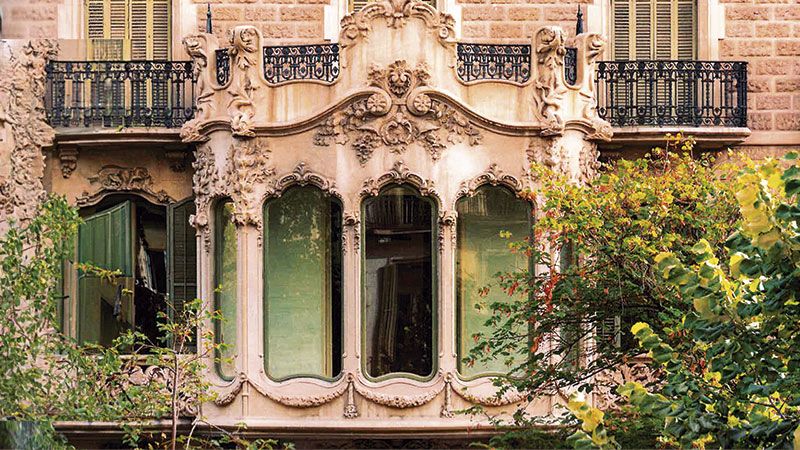Welcome to the definitive article for learning how to use accent marks in Spanish. Starting today, the use of accent marks in Spanish will no longer be a problem and you will be able to create mistake-free pieces of writing, just like a native speaker of the Spanish language—and, sometimes, even better.
Do you recognize this graphic symbol: (´)? You’ve probably seen many Spanish words that have accent marks but, perhaps, you still do not know very well why. Today, we are going to deal with the general rules for using accent marks in Spanish. We will also refer to those words that escape these rules so don’t make any mistakes. Click here to continue reading in Spanish if you want to practice your reading skills. Shall we start?
Groups of words according to stressed syllables
To understand the use of accent marks in Spanish, you must first know that all words are made of syllables, or units of pronunciation. In Spanish, there are:
1. One-syllable words(called monosyllables): pan (bread), sol (sun), flor (flower).
2.Two-syllable words:libro(li-bro) (English: book), casa (ca-sa) (house), mamá (ma-má) (mother).
3.Three (or more) syllable words: profesor (pro-fe-sor) (English: teacher), libreta (li-bre-ta) (“notebook”), importante (im-por-tan-te) (“important”), teléfono (te-lé-fo-no) (“telephone”), sábado (sá-ba-do) (“Saturday”).

The syllable that is stressed, and therefore more intensively pronounced, is called tonic syllable. This syllable can be placed:
- At the end of the word. In Spanish, we call them agudas. (Words stressed on the last syllable). E.g.: Ma-má, pro-fe-sor.
- On the penultimate syllable. In Spanish, we call them llanas. (Words stressed on the second-to-last syllable. E.g.: Li-bro, ca-sa, li-bre-ta, im-por-tan-te.
- On the antepenultimate syllable. In Spanish, we call them esdrújulas. (Words stressed on the third-to-last syllable ). E.g.: Te-lé-fo-no, sá-ba-do.
- On those syllables before the antepenultimate in Spanish, we call them "sobresdrújulas” E.g.: Prac-ti-ca-men-te, có-me-te-lo.
When do we need to use accent marks?
Sometimes, these tonic syllables have to be marked with accents (‘), also called tildes, which are always placed on a vowel (a, e, i, o, u). To know if the tonic syllable needs to be marked with a tilde —or accent mark—or not, we must follow these rules.

Monosyllabic words
In general, they cannot be accent marked. For example:
Pan(bread) -- Pie (foot) -- En (in)
Words stressed on the last syllable: agudas
These words have an accent mark when they end in vowel, vowel + n or vowel + s. For example:
Mamá (mom) -- Salón (living room) -- Inglés (English)
Words stressed on the second-to-last syllable: llanas
Oppositely, these words have an accent mark when they don’t end in vowel, vowel + n or vowel + s. For example:
Árbol (tree) -- Difícil (difficult) -- Lápiz (pencil)
Words stressed on the third and fourth-to-last syllable: esdrújulas and sobresdrújulas
This type of words always has accent marks. Look at some examples:
Teléfono (telephone) -- Sábado (Saturday) -- Cómpratelo (Buy it)
Exception: Diacritics
As we mentioned in the previous section, monosyllabic words aren’t usually marked with a tilde, except in case they need a diacritic mark to differentiate themselves from other words. Examples:
Té (tea) and te (you)
El té que compraste ayer estaba delicioso
(The tea you bought yesterday was delicious)
Te regalo mis comics, que ya no los quiero
(I give you my comics, I don't want them anymore)
Sí (yes) and si (if)
Le hice una pregunta y me contestó que sí
(I asked him a question and he answered yes)
Si quieres ir al cine, compro yo las entradas
(If you want to go to the cinema, I’ll get the tickets)
How to accentuate diphthongs and hiatuses?
Diphthongs and hiatuses follow the general rules of accentuation. When stressed, diphthongs have an accent mark on the open vowel of the combo. Hiatuses, meanwhile, have it on the closed vowel.
Example of accented diphthong: Adiós (bye)
Example of accentuated hiatus: Geología (geology)
You have reached the end of the article! We hope that these rules are useful to you so that you never have to cast lots on which words have an accent mark and which don’t. Many thanks to Ignacio Sellés, head of studies at our school in Alicante, for offering us today's language pill.
¡Adiós! (With accent mark).





